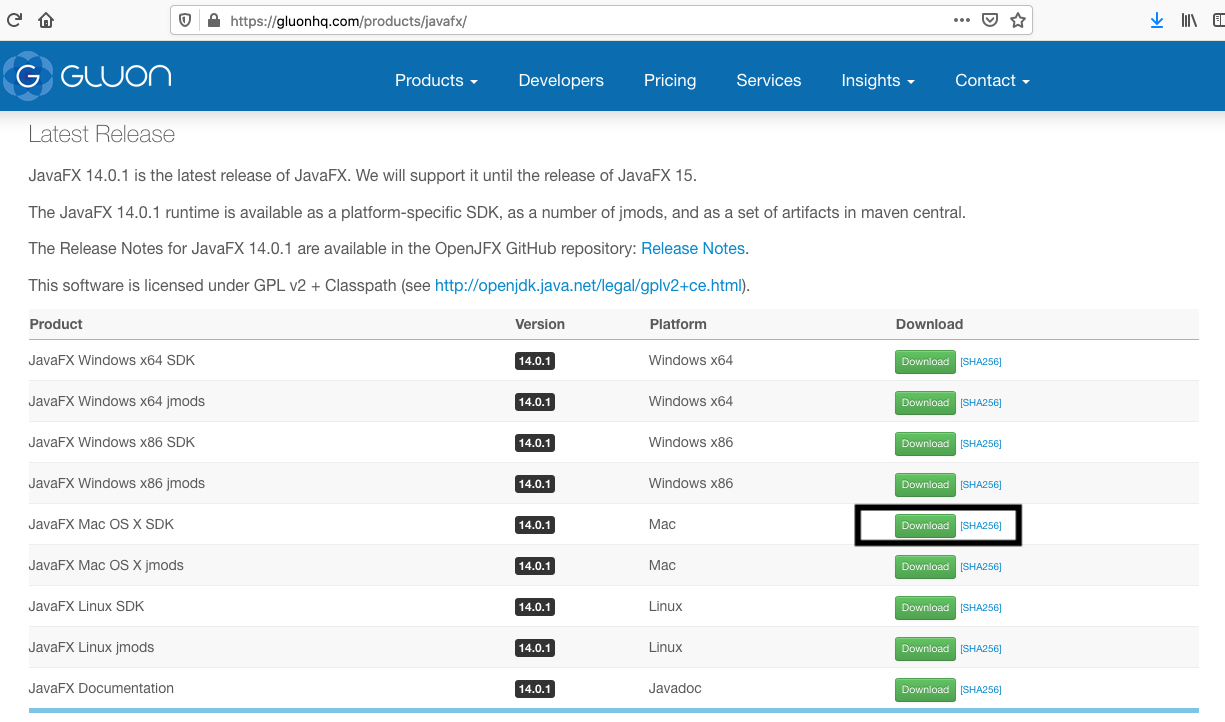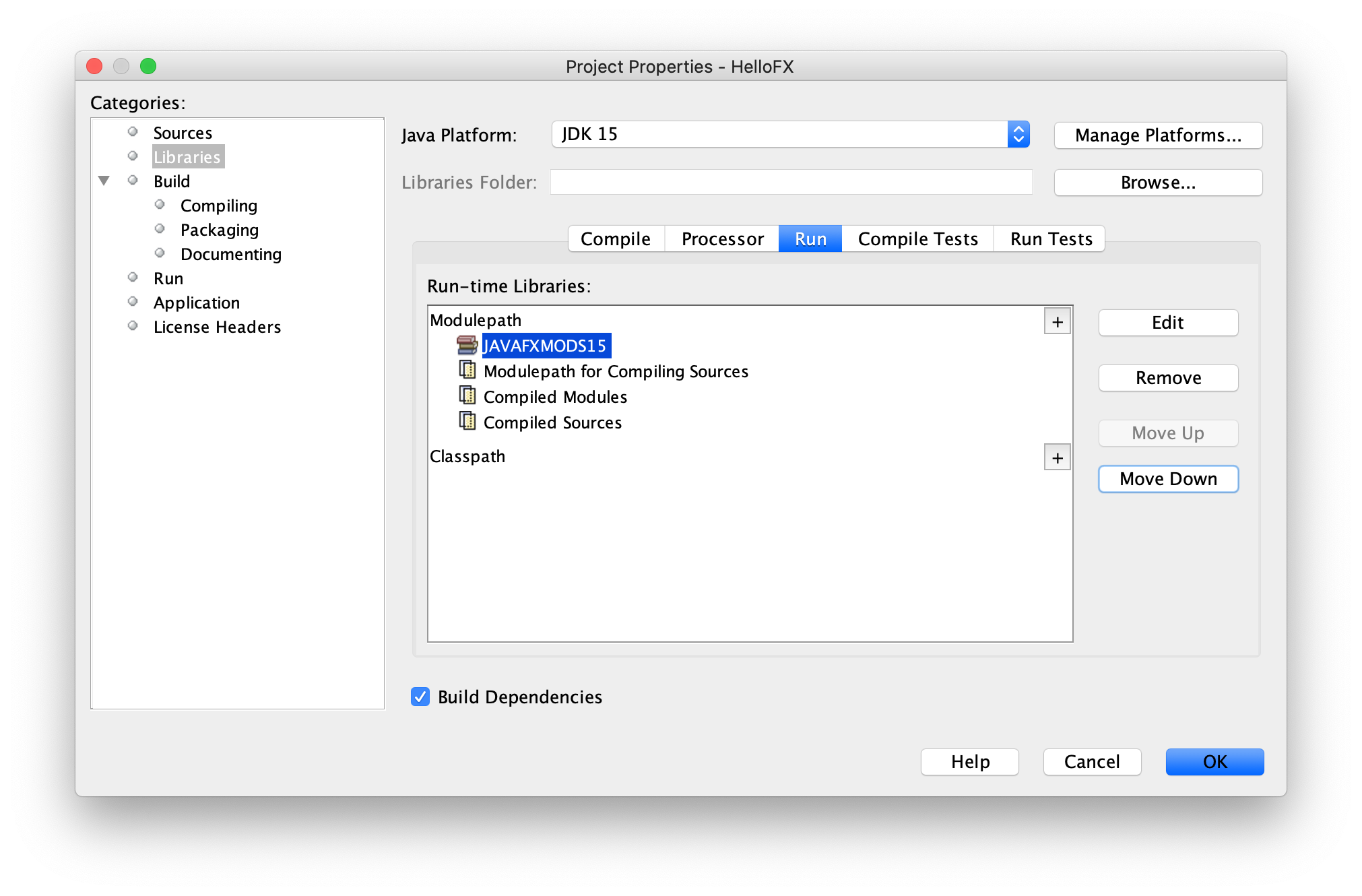You'll need at least JDK 8 installed in your system. Make sure your e(fx)clipse installation uses this JDK when you launch your Eclipse instance!
Download 'JavaFX Mac OS X SDK' for your Java version from here. Double-click the.zip-file to unpack, then navigate into the unzipped folder. Press Cmd+Space, type Terminal and press Enter. Type java -module-path (with a space at the end), then drag and drop the lib-folder into the console.
For the lazy
For the lazy ones who prefer an all-in-one download, we provide preconfigured packages so that you don't have to worry about all the different bits and pieces.
For the ambitious
For those who'd like to assemble their own e(fx)clipse installation based on Eclipse SDK we offer an installation guide which helps you get started.
- Download the latest JavaFX SDK installer file for Windows (an EXE extension) or Mac OS X (a DMG extension). Download older versions of the JavaFX SDK installer from the Previous Releases download page. After the download is complete, double-click the EXE or DMG file to run the installer. On the Mac OS X platform, double-click the open-box icon.
- JavaFX Scene Builder is a powerful development tool that allows you to quickly design JavaFX user interfaces for applications using a visual layout editor. JavaFX Scene Builder is very easy-to-use and does not require coding. Simply drag and drop UI components to a work area, apply style sheets, modify UI properties.
- Since e (fx)clipse is part if the Eclipse Release Train you can install the e (fx)clipse tooling from the Release Train Updatesite (eg Neon, Oxygen) who is already preconfigured into your install. If you are not familiar with update-sites you can follow the short guide below or use a pre-packaged version.
Since e(fx)clipse is part if the Eclipse Release Train you can install the e(fx)clipse tooling from the Release Train Updatesite (eg Neon, Oxygen) who is already preconfigured into your install.
If you are not familiar with update-sites you can follow the short guide below or use a pre-packaged version
Fire up your Eclipse IDE if you have not done so already.
e(fx)clipse is an extension for your Eclipse IDE which is delivered as a so called p2 repository. Extensions like this can be installed using the 'Install New Software' wizard.

In the drop down select the release repository and in the filter enter e(fx)clipse and then let follow the Install Wizard to the end and restart Eclipse.
JavaFX is a software platform that is used for developing desktop applications that can run across a wide variety of devices.

JavaFX support in IntelliJ IDEA includes code completion, search, navigation and refactoring in JavaFX-specific source files (including .fxml and JavaFX .css files), integration with JavaFX Scene Builder, JavaFX application packaging capabilities, and more.
Make sure the JavaFX plugin is enabled
To be able to work with JavaFX in IntelliJ IDEA, the JavaFX bundled plugin must be enabled:
In the Settings/Preferences dialog Ctrl+Alt+S, select Plugins.
Switch to the Installed tab and make sure that the JavaFX plugin is enabled.
If the plugin is disabled, select the checkbox next to it.
Apply the changes and close the dialog. Restart the IDE if prompted.
Create a new project
Java 11 or later is required to create JavaFX applications.
When you create a new JavaFX project, IntelliJ IDEA generates a fully configured sample application.
Launch IntelliJ IDEA.
If the Welcome screen opens, click New Project.
Otherwise, from the main menu, select File | New | Project.
In the New Project wizard, select JavaFX from the list on the left.
Name the new project, change its location if necessary, and select a language, a build system, and a test framework.
In the Group field, specify the name of the package that will be created together with the project.
Select the JDK that you want to use in your project.
If the JDK is installed on your computer, but not defined in the IDE, select Add JDK and specify the path to the JDK home directory.
If you don't have the necessary JDK on your computer, select Download JDK.
Click Next.
On the next step of the wizard, select the libraries that you want to use in your application and click Finish.
Javafx Mac Download Free
Run the application
Open the HelloApplication.java class, click the icon in the gutter, and select Run 'HelloApplication.main()'.
The IDE starts compiling your code.
When the compilation is complete, the application window appears.
This means that the project is configured correctly and everything works as it should.
Javafx Download Mac Os X

For information on how to create modular and non-modular projects with Maven or Gradle, refer to Getting Started with JavaFX.
Javafx Download Mac
Troubleshoot
Process finished with exit code -1073740791 (0xC0000409)The problem is caused by an error in the NVIDEA driver. Update your driver to the latest version. For more information, refer to the community forum.
'...' cannot be opened because the developer cannot be verified.The problem is caused by notarization in macOS software. Follow the steps in the discussion to resolve the problem.